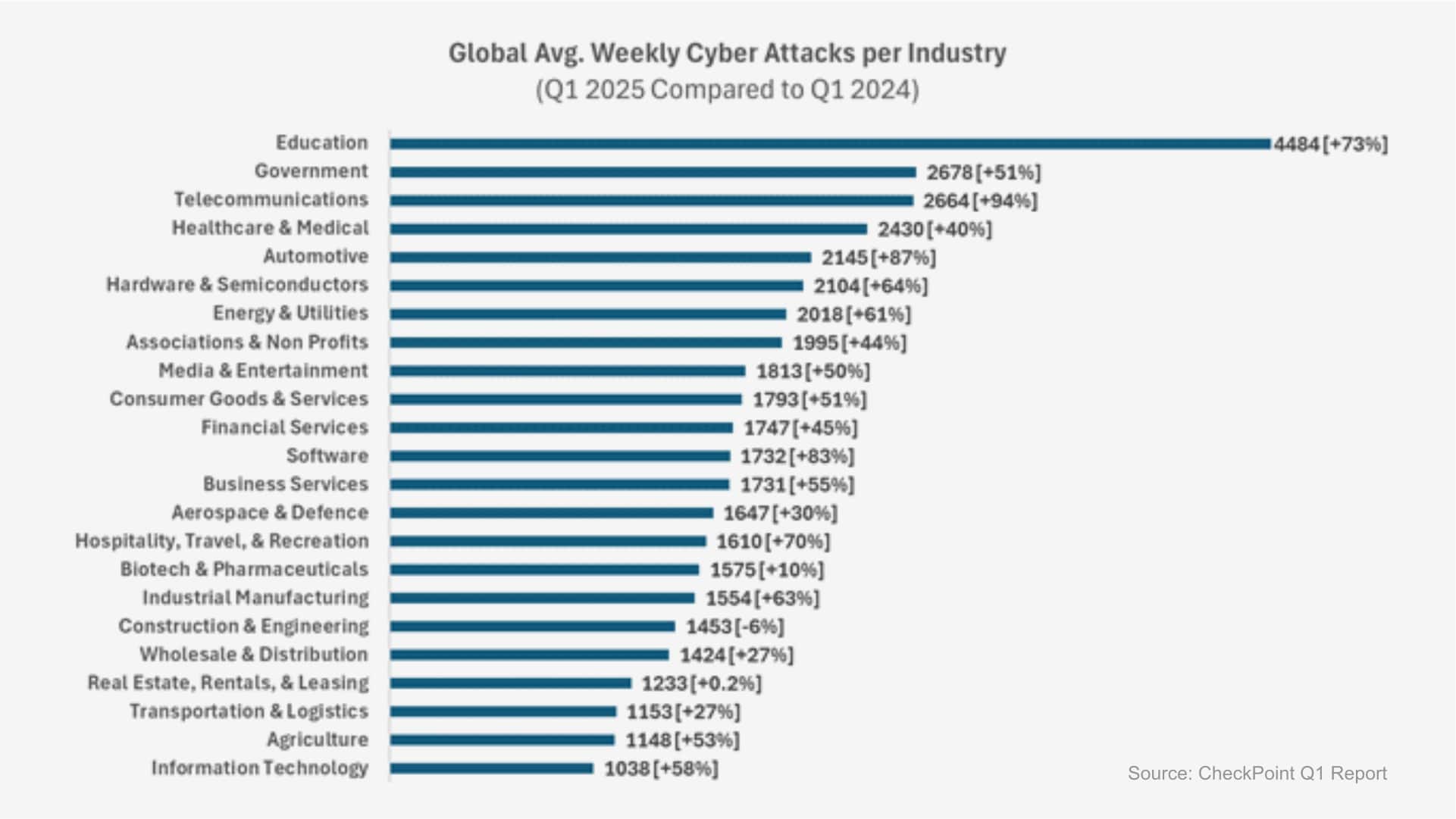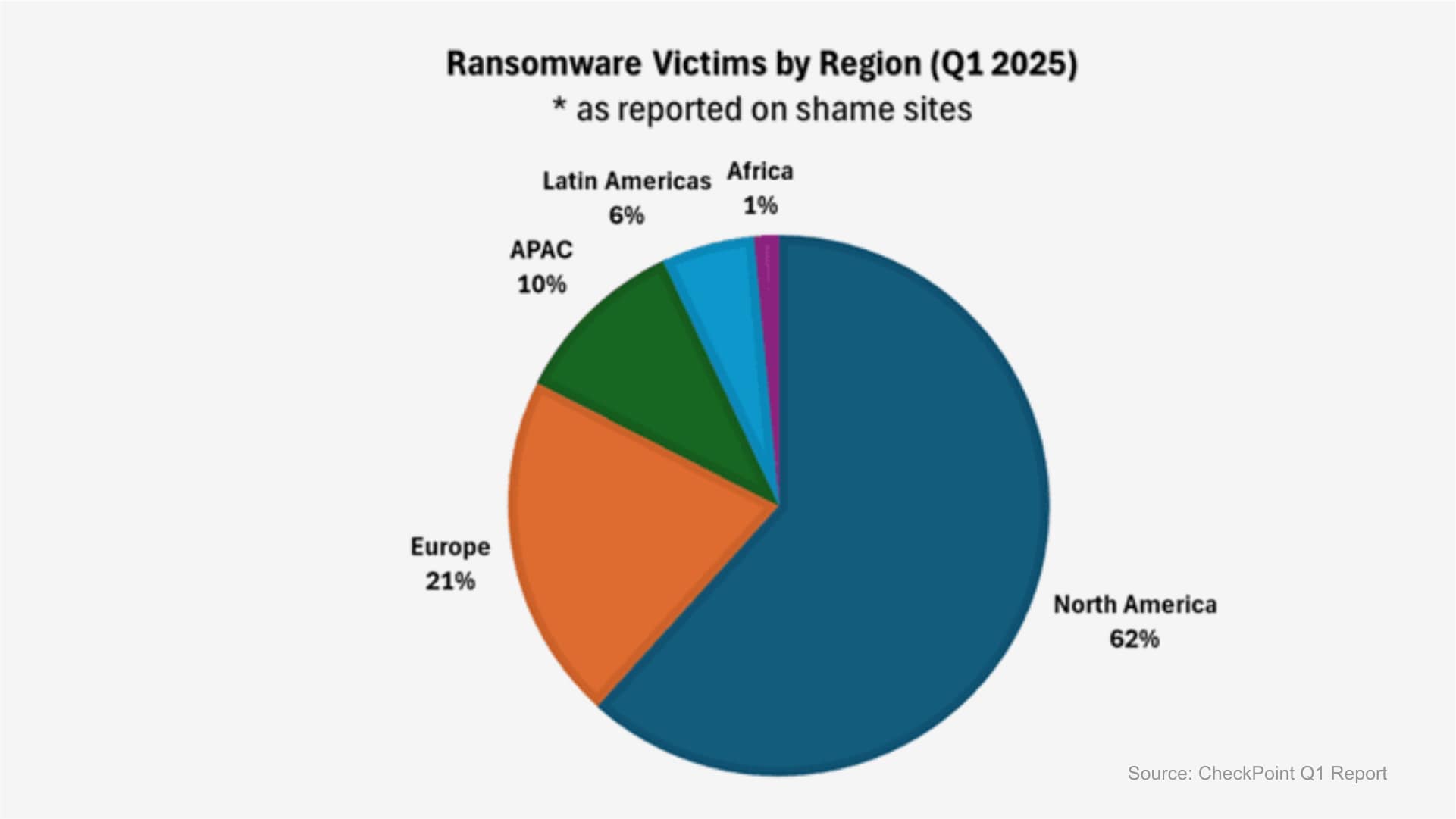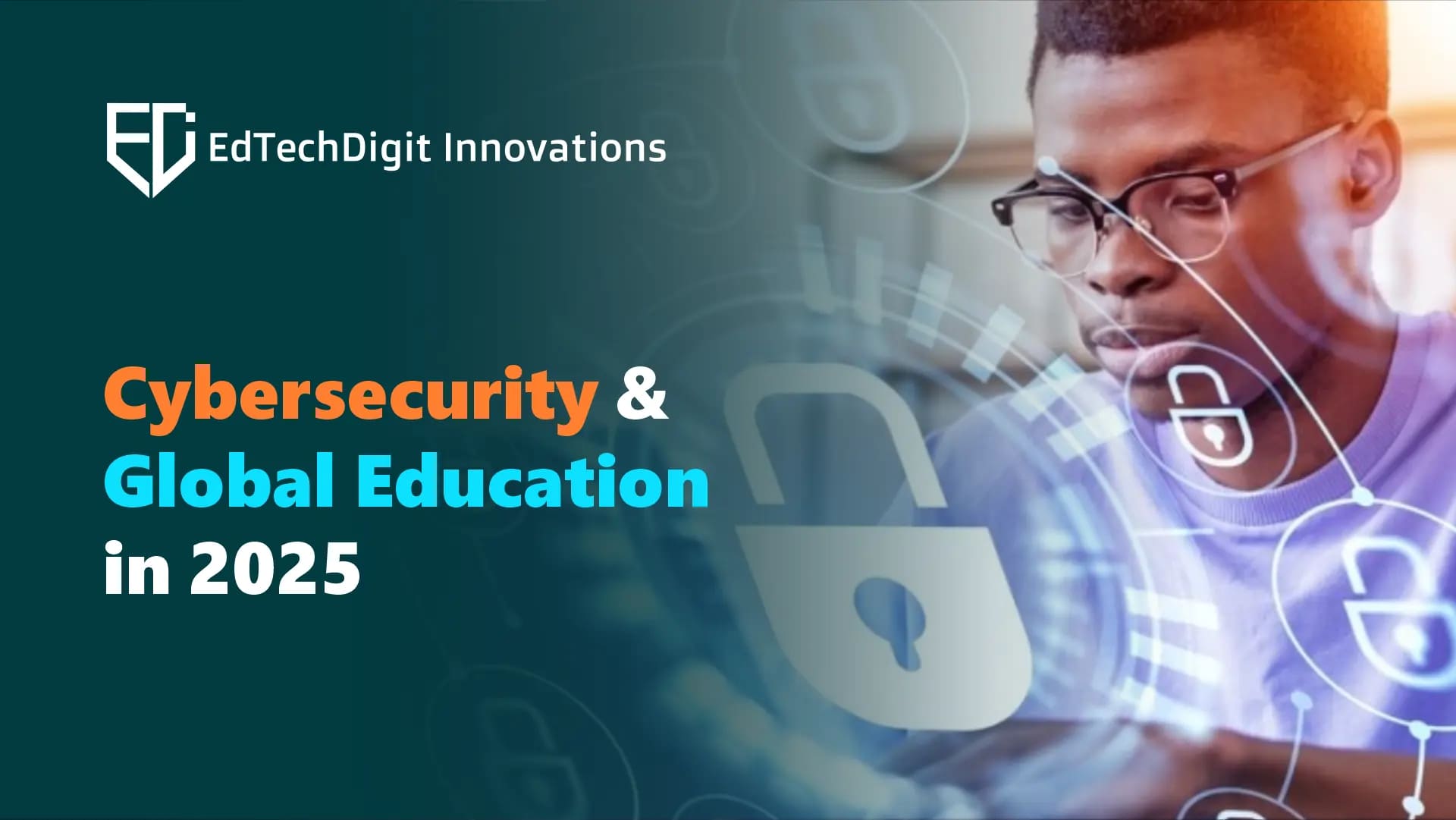2025 is not for beginners! Scared? Keep reading!
Educational institutions have evolved over the years and so has the cybersecurity systems. Nobody expected malicious threat actors to infiltrate into the global education circuit with such thrust. With the span of AI in education expanding at a staggering rate; it puts added pressure on the global institutions to amp up their cybersecurity guardrails promptly.
With massive attacks taking place in the education sector worldwide; it is an urgent requisite to plan ahead of the attacks and guard your sensitive data from theft or misuse. From primary schools to universities; with the advancing education technology comes a massive thrust on its security pedestal. Not just that, it is time that the ecosystem sensitized the use of cybersecurity frameworks and have stringent security norms in place. Limited resources and the need for modernization often lead to a mix of outdated and modern IT systems in schools and universities. Cybercriminals exploit vulnerabilities to gain access and then leverage compromised platforms to launch further attacks. There is an array of cybersecurity attacks that take place in the education sector; to weaken the entire security thread and extract sensitive information for mean gains. Let us explore some of the vicious cyberattacks.

- Ransomware- A prevalent way to attack by disrupting operations by encrypting your data and demanding hefty ransom payouts for its decryption.
- Phishing- Aims at stealing sensitive information by tricking individuals through deceptive emails.
- Malware- Unauthorized infiltration of malicious software that comprises systems and data integrity.
- DDoS (Distributed Denial of Service) Attacks- A barrage of fake traffic that gets accumulated in your emailer that can destroy online learning platforms big time.
- Insider Threats- Pose risks from within the organization including employees or internal personnel comprising inside data and critical information at their disposal.
This can read simple but when digging deeper; you shall encounter massively ritical and confidential information at stake. Let us understand the growing threat landscape rom a closer lens.
The Growing Threat Landscape in Education Sector

While no market sector is immune from cyberattacks, the education sector was the hardest hit in Q1 2025; averaging a whopping number of attacks per organization each week- a staggering 73% hike from the previous year (Checkpoint Report). the growing dependence on digital infrastructure in this industry; make it prime target for cyber criminals to exploit vulnerabilities.

This revelation report further highlights North America as the leading country in the rising ransomware victim by region; when deduced for the Q1 2025 report. With the spike in cyberattacks in education, it is time governments and organizations take cumulative steps toward strengthening the cyber radar and security firewalls from these malicious threat actors.
Top 3 Contributors to Massive Attack Growth in Education Sector
|
Increased Digitization |
Weaker Cyber Defense |
High Ransomware Rates |
With these factors impacting the overall smooth functioning on the education ecosystem; educators and technology developers must take added security measures to safeguard their crucial information from attacks.
Promising Strategies to Strengthen Security in Education
-
Timely Software Patching- Establish a regular patching schedule and automate updates wherever possible.
-
Invest in Fully Integrated Solutions- Ad-hoc integrations create vulnerability points of attacers. Investigate about the security certifications, compliance documentation, and disaster recovery plans of software vendors.
-
Implement Multi-Factor Authentication (MFA)- This is an added safety guard that requires users to provide two-factor authentication; that significantly aims at reducing the risk of unauthorized access.
-
Use Strong Passwords- Easy, short, amd simple passwords are a treat for attackers; as these help in breaking the seal and getting into the unauthorized zone quite easily. Hence, build stronger passwords.
-
Spot and Report Surging Attacks- Educate learners, staff, and teaching faculty on cybersecurity best practices including garnering skills on recognizing phishing attacks, using strong passwords, and the role of keeping software and systems updated from time to time.
-
Develop and Enforce a Robust Security Policy- A comprehensive security policy must demarcate acceptable use of technology resources, password management practices, data handling procedures, and incident response protocols.
-
Provide Regular Training- Timely upgrades and upskilling and reskilling (if required) is a necessary element of building a robust security posture for education ecosystem. Earning the latest skills in security to guard against any uninvited malicious threat is a must today. You may consider world’s most trusted and popular cybersecurity certifications from the United States Cybersecurity Institute (USCSI ®) among others- that is an internationally accepted name of repute in the credentialing circuit worldwide.
-
Leverage Artificial Intelligence- You cannot deny the fact that Artificial Intelligence has quite a lot of say in our daily routine. Educational technology advancements are rested on this very AI advancement; that triggers growth across industries. Side by side, allowing attackers to make their way in; if you are not skilled or certified enough to gauge the incident beforehand. This is where a credible skillset in AI and cybersecurity can amplify your institution’s growth manifold. Make AI in education your flex today, but do not forget the cybersecurity facet!
-
Prioritize Human Risk Management- Aim at bringing security awareness training to the fore; as this includes simulated phishing attacks, and real-time interventions; so as to facilitate real-time understanding and competencies gained to evolve behavior and mitigate human risk.
Positives of Cybersecurity Integration in Curriculum
- Incorporating cybersecurity topics into lesson plans, covering online privacy, digital footprints, and safe internet practices are some of the many ways cybersecurity can help alleviating attacks rate of action.
- Utilizing gamified learning tools and simulations to engage students in understanding cybersceurity concepts is an incredible starting point to fostering security in education ecosystem.
- Encouraging students to work on projects that promote digital safety; including building awareness campaigns or developing secure applications.
This could be your beginning if this read intrigues you to take the necessary action safeguarding the education system against malicious infiltration of threat actors. Understanding top ed tech trends and evolving multiple folds with the latest educational technology innovations is a must. You could be a massive addition to the secured edtech innovations’ foyer, allowing for voluminous feat at building a firewall against these threat actors. Partner with the latest K12 education technology and use it as a tool to guard against any uninvited action for attackers. Make your way up the ed tech security ladder today!

